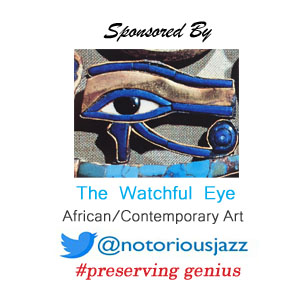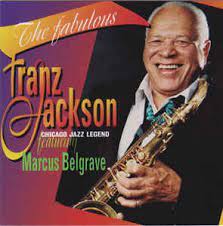
Daily Dose Of Jazz…
Born in Rock Island, Illinois on November 1, 1912 Franz Jackson got his first lessons on saxophone from Jerome Don Pasquall and later studied at the Chicago Musical College.
Early in his career, Jackson played with Albert Ammons’s band and for much of the 1930s he was based in Chicago, Illinois. He toured with Fletcher Henderson in 1938, then played with Roy Eldridge’s band in New York City. In 1940 he toured with Fats Waller and then went to work with Earl Hines.
Following small band work back in New York City, Franz joined Cootie Williams’s big band, played in Boston, Massachusetts with Frankie Newton, toured with Eldridge, and worked with Wilbur De Paris at Jimmy Ryan’s in the city.
Jackson formed his own band in Chicago in 1957, the Original Jass All Stars and with this group he made overseas tours, including playing in Vietnam. Moving to Dowagiac, Michigan in 1975, he formed another band, the Jazz Entertainers, in 1980.
Saxophonist and clarinetist Franz Jackson, who played in the Chicago jazz school, passed away on May 6, 2008 in Niles, Michigan. The Franz Jackson Collection at the Chicago Jazz Archive contains his papers and oral history material.
More Posts: bandleader,clarinet,history,instrumental,jazz,music,saxophone
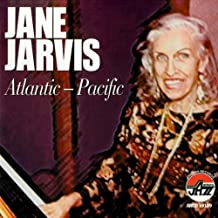
Daily Dose Of Jazz…
Jane Jarvis, née Louella Jane Nossette on October 31, 1915 in Vincennes, Indiana, to Charles and Luella Nossette. She was recognized as a piano prodigy at the age of five and she studied under a Vincennes University professor as a young girl.
A family move to Gary, Indiana in 1927 soon put her in place to be hired to play the piano at radio station WJKS in Gary. Orphaned at 13 when her parents perished in a train-auto wreck, she returned to Vincennes, graduating from high school in 1932. She continued her studies at the Chicago Conservatory of Music, the Bush Conservatory of Music, Loyola University Chicago and DePaul University.
By 1954, Jane was on television in Milwaukee, hosting a show called Jivin’ with Jarvis while serving as staff pianist and organist. At the time, the Milwaukee Braves had just relocated from Boston and sought her out to be the organist at Milwaukee County Stadium. Jarvis stayed with the Braves for eight seasons and then went to New York City, where she took a position with Muzak Corporation as a staff composer and arranger. She would rise to become a corporate vice-president and its director of recording and programming.
In 1964, she was hired by the New York Mets to play the organ at Shea Stadium, where she is remembered for playing their theme song, Meet The Mets, which debuted in the 1963 season before every home game, followed by the Jarvis composed Let’s Go Mets, as the team took the field.
Leaving Muzak in 1978, the next year she left the Mets to concentrate on her first musical love, jazz piano. She became a fixture at New York City nightclubs, frequently playing alongside bassist Milt Hinton. She became a founding member of the Statesmen of Jazz, a group of jazz musicians aged 65 and older sponsored by the American Federation of Jazz Societies, and was featured on their 1994 album. She performed with this group across the US as well as in Japan and elsewhere.
Jarvis released several albums of her jazz piano work, including Jane Jarvis Jams, and Atlantic/Pacific. In addition to Hinton, she often collaborated with trombonist Benny Powell and bassist Earl May. As a member of ASCAP, she also had over three hundred compositions to her credit.
Living in Cocoa Beach, Florida, where she was honored in 2003 by the Space Coast Jazz Society for her lifetime achievement. Back in New York City in 2008, she was displaced when a construction crane collapsed, damaging her building on East 50th Street. Pianist, composer, baseball stadium organist and music industry executive Jane Jarvis spent her final years of her life at the Lillian Booth Actors Home in Englewood, New Jersey until she passed away on January 25, 2010.
More Posts: bandleader,composer,history,instrumental,jazz,music,piano
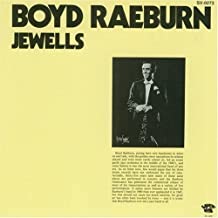
Daily Dose Of Jazz…
Boyd Albert Raeburn was born in Faith, South Dakota on October 27, 1913 and attended the University of Chicago, where he led a campus band. Gaining his earliest experience as a commercial bandleader at 1933~1934 Chicago’s World Fair, for the rest of the decade, he worked in and often led dance bands.
In the Forties the group passed through swing before becoming identified with the bop school. He went on to start a big band, which was active from 1944 to 1947, performing arrangements comprable to those used by Woody Herman and the progressive jazz of Stan Kenton during the same period. The compositions arranged by George Handy were the most contemporary, and after Handy’s departure Johnny Richards joined in 1947 and for the next year he wrote 50 compositions.
He composed Rip Van Winkle for his second wife, singer Ginny Powell, who sang with her husband’s group, as well as with Harry James and Gene Krupa. Boyd left music in the mid-1950s and they moved to Nassau, Bahamas where his wife transitioned.
Settling in New Orleans, Louisiana for a time, he ran a furniture store. Bass saxophonist and bandleader Boyd Raeburn passed away of a heart attack at age 52 on August 2, 1966 in Lafayette, Indiana.
More Posts: bandleader,history,instrumental,jazz,music,saxophone
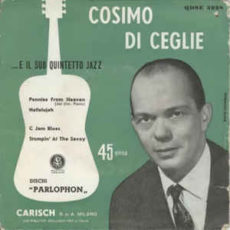
Daily Dose Of Jazz…
Cosimo Di Ceglie was born October 21, 1913 in Andria, Italy and played with local bands in Andria before joining Herb Flemming’s group in the mid-1930s. He recorded with Piero Rizza and the Orchestra del Circolo Jazz Hot di Milano, as well as under his own name, in the period 1936-1938.
He went on to work with Enzo Ceragioli and Gorni Kramer around 1940. Active during World War II on radio, playing with a six-piece ensemble, he made further recordings under his own name in the late 1940s and into the 1950s. He also played with Adriano Celentano, Kai Hyttinen, and others later in his career.
Guitarist Cosimo Di Ceglie passed away in 1980 in Milan, Italy.
More Posts: bandleader,guitar,history,instrumental,jazz,music

Daily Dose Of Jazz…
Ray Linn, born in Chicago, Illinois on October 20, 1920 experienced his first major engagements in the late 1930s playing with Tommy Dorsey, from 1938 to 1941 and Woody Herman until the outbreak of World War II. He would return to play with Herman again several times after the war during the Forties and Fifties.
In the 1940s he spent time playing with several big bands led by Jimmy Dorsey, Benny Goodman, Artie Shaw, and Boyd Raeburn. Moving to Los Angeles, California in 1945, he worked extensively as a studio musician, in addition to playing with Bob Crosby in the early 1950s.
The Fifties decade would be his final extended tenure with Herman. He spent much of the 1960s playing music for television, including The Lawrence Welk Show.
He recorded eight tunes as a leader in 1946, and full-length albums in 1978 and 1980, the latter of which are Dixieland jazz. Trumpeter Ray Linn passed away in November 1996 in Columbus, Ohio.
More Posts: bandleader,history,instrumental,jazz,music,trumpet



